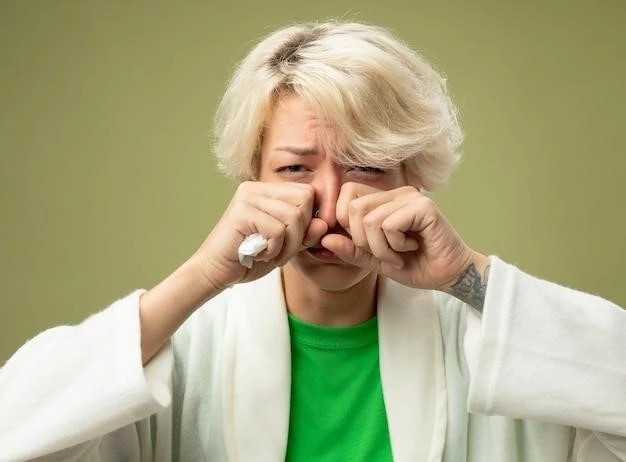Introduction
Conjunctivitis is a common eye condition affecting individuals of all ages, leading to redness and irritation. Toxic conjunctivitis results from prolonged use of certain medications, often due to preservatives, causing chronic inflammation. It differs from allergic conjunctivitis.
Toxic conjunctivitis, also known as toxic keratoconjunctivitis, is a chronic inflammatory condition of the eye surface caused by an agent such as a preservative or medication. This condition can lead to papillary or follicular responses in the conjunctiva, resulting in symptoms like chemosis, edema, and hyperemia. It differentiates from other forms of conjunctivitis by direct damage to ocular tissues from offending agents.
Definition of Toxic Conjunctivitis
Toxic conjunctivitis, also known as toxic keratoconjunctivitis, results from prolonged use of certain medications or preservatives, leading to chronic eye inflammation and distinctive ocular tissue damage.
Chronic toxic conjunctivitis often develops with extended use of certain topical medications, particularly due to the preservatives incorporated in these formulations. The continuous exposure to these agents can trigger chronic inflammation in the eye, leading to a distinct clinical presentation of toxic keratoconjunctivitis.
Preservatives in Eye Drops
One common cause of toxic conjunctivitis is the presence of preservatives in eye drops. Prolonged exposure to these preservatives, such as benzalkonium chloride, can lead to chronic inflammation of the ocular tissues. Identifying and avoiding preservatives in eye care products is crucial to preventing toxic conjunctivitis.
Protracted Use of Topical Medications
Chronic toxic conjunctivitis commonly arises from prolonged application of certain topical medications, often due to the presence of preservatives in these formulations. The continuous exposure to these agents can result in chronic eye inflammation and distinct ocular tissue damage.
One prevalent symptom of toxic conjunctivitis is redness and irritation of the eye. The chronic inflammation caused by the offending agents such as preservatives or medications can lead to visible redness and discomfort in the affected eye.
Chronic toxic conjunctivitis is characterized by persistent inflammation of the eye triggered by prolonged exposure to substances like preservatives or medications. This ongoing inflammation can lead to discomfort, redness, and other ocular symptoms.
Redness and Irritation
One prevalent symptom of toxic conjunctivitis is redness and irritation of the eye. The chronic inflammation caused by the offending agents such as preservatives or medications can lead to visible redness and discomfort in the affected eye.
Chronic Inflammation
Chronic toxic conjunctivitis is characterized by persistent inflammation of the eye triggered by prolonged exposure to substances like preservatives or medications. This ongoing inflammation can lead to discomfort, redness, and other ocular symptoms.
When diagnosing toxic conjunctivitis, obtaining accurate historical information is crucial. Questions about prolonged topical medication use, exposure to specific eye care products, and any previous ocular conditions can help differentiate toxic conjunctivitis from other eye disorders and guide appropriate management strategies.
Differentiation from Allergic Conjunctivitis
When diagnosing toxic conjunctivitis, distinguishing it from allergic conjunctivitis is essential. Toxic conjunctivitis typically arises from prolonged use of topical medications containing preservatives, whereas allergic conjunctivitis results from allergic reactions to various triggers.
Infectious vs. Noninfectious Causes
When dealing with conjunctivitis, it is essential to differentiate between infectious and noninfectious causes. Allergic conjunctivitis, a common noninfectious cause, affects a significant portion of the population and showcases distinct seasonal patterns. On the other hand, toxic conjunctivitis often arises from prolonged exposure to specific eye care products or medications, leading to chronic inflammation of the eye.
Allergic Conjunctivitis
Allergic conjunctivitis is a common form of noninfectious conjunctivitis, affecting a significant portion of the population. It typically presents with symptoms such as itching, mucoid discharge, chemosis, and eyelid edema. Long-term use of eye drops containing preservatives in individuals with conjunctival irritation often indicates allergic conjunctivitis as an underlying cause.
Historical Questions for Diagnosis
Accurate historical information is crucial in diagnosing toxic conjunctivitis. Inquiring about prolonged topical medication use, exposure to specific eye care products, and previous ocular conditions helps differentiate toxic conjunctivitis and guides effective management.
Identifying and Discontinuing Offending Agents
Management of toxic conjunctivitis involves identifying and discontinuing the use of offending agents, such as preservatives or specific eye medications, which trigger chronic inflammation. This approach aims to halt the ongoing damage to ocular tissues and alleviate symptoms associated with toxic conjunctivitis.
Transitioning to unpreserved formulations of topical medications is a crucial aspect of managing toxic conjunctivitis. Unpreserved formulations help reduce the risk of further ocular irritation and inflammation associated with the preservatives present in typical eye care products, promoting better ocular health outcomes.
Switching to Unpreserved Formulations
Transitioning to unpreserved formulations of topical medications is a critical step in the management of toxic conjunctivitis. Unpreserved formulations help minimize ocular irritation and inflammation caused by preservatives present in typical eye care products, promoting improved ocular health.
Medication Adjustment
Adjusting medications is a key part of treating toxic conjunctivitis. Ensuring the proper dosage and minimizing exposure to preservatives or toxic components in the medication helps manage the condition effectively and reduces ocular inflammation and discomfort.
Preservative-Free Eye Drops
When managing toxic conjunctivitis, utilizing preservative-free eye drops is crucial. These formulations help mitigate further irritation and inflammation caused by preservatives found in traditional eye care products, ultimately promoting better overall ocular health and reducing symptoms related to toxic conjunctivitis.
One potential complication of toxic conjunctivitis is corneal epithelium toxicity. Prolonged exposure to preservatives or medications can result in damage to the corneal surface, leading to symptoms such as blurred vision, discomfort, and potential vision impairment.
Complications of toxic conjunctivitis can include corneal epithelium toxicity, which results from prolonged exposure to preservatives or medications. This toxicity can lead to damage to the corneal surface, causing symptoms like blurred vision, discomfort, and potential vision impairment.
Chronic unilateral conjunctivitis can be indicative of underlying ocular pathology. It is essential to identify and discontinue the causative agent to manage the condition effectively and prevent further complications associated with toxic conjunctivitis.
Chronic Unilateral Conjunctivitis
Chronic unilateral conjunctivitis can signal underlying ocular pathology. Identification and discontinuation of the causative agent are essential for effective management and prevention of complications related to toxic conjunctivitis.
Using Non-Toxic Eye Care Products
Opting for non-toxic eye care products is essential in preventing toxic conjunctivitis. These products are formulated without harsh chemicals, reducing the risk of ocular irritation and inflammation associated with preservatives or toxic substances found in conventional eye care products.
Avoiding Prolonged Use of Preservatives
Preventing toxic conjunctivitis involves avoiding prolonged use of preservatives in eye care products and medications. Utilizing preservative-free formulations can help reduce the risk of chronic inflammation and ocular irritation, safeguarding eye health and minimizing the occurrence of toxic conjunctivitis.
Corneal Epithelium Toxicity
Complications of toxic conjunctivitis can include corneal epithelium toxicity from prolonged exposure to preservatives or medications. This can lead to damage to the corneal surface, affecting vision.

Conjunctival Biopsy
Conjunctival biopsy may be necessary in cases where the underlying cause of conjunctivitis is unclear. This procedure can help identify specific pathological changes in the conjunctiva, guiding the diagnosis and treatment of conditions like toxic conjunctivitis.
Underlying Ocular Diseases
Identifying and addressing underlying ocular diseases is crucial in the treatment of toxic conjunctivitis. Conditions such as immune-related, infectious, or dermatologic origins can contribute to the development or exacerbation of toxic conjunctivitis symptoms, emphasizing the importance of comprehensive evaluation and management.
Long-term management of toxic conjunctivitis involves continuous monitoring for symptoms, regular eye examinations, and adherence to non-toxic eye care products. Identifying any recurrence or exacerbation of symptoms promptly is crucial for optimal ocular health.
Impact on Visual Health
Toxic conjunctivitis can have a significant impact on visual health, especially if left untreated. Prolonged inflammation and damage to the ocular tissues can lead to blurred vision, discomfort, and potential impairment of overall visual function. Prompt diagnosis and management are crucial in preserving visual health in cases of toxic conjunctivitis.
Long-Term Management Strategies
In cases of toxic conjunctivitis, implementing long-term management strategies is crucial for maintaining ocular health. Regular monitoring of symptoms, adherence to prescribed treatments, and consistent follow-up with healthcare professionals are essential for effectively managing and minimizing the recurrence of toxic conjunctivitis.
Recent research has focused on developing preservative-free medications to reduce the risk of toxic conjunctivitis. These advancements aim to offer effective treatment options while minimizing the potential for ocular toxicity associated with preservatives in traditional eye care products.

Trends in Toxic Conjunctivitis Cases
Ophthalmic professionals have observed an increasing trend in toxic conjunctivitis cases due to prolonged exposure to preservatives or medications. This rise underscores the importance of early detection, appropriate management, and patient education to prevent long-term ocular complications associated with toxic conjunctivitis.
Recent advancements in preservative-free medications aim to reduce the risk of toxic conjunctivitis. These formulations provide effective treatment options while minimizing the potential ocular toxicity associated with preservatives in traditional eye care products, enhancing patient safety and comfort.
Advancements in Preservative-Free Medications
Recent advancements in preservative-free medications aim to reduce the risk of toxic conjunctivitis. These formulations provide effective treatment options while minimizing the potential ocular toxicity associated with preservatives in traditional eye care products, enhancing patient safety and comfort.
Summary of Key Points
Toxic conjunctivitis, often caused by prolonged exposure to preservatives or medications, can lead to chronic inflammation of the eye. The condition requires early detection, appropriate management, and patient education to prevent long-term ocular complications. Monitoring symptoms, using non-toxic eye care products, and adhering to prescribed treatments are essential for effective management and minimizing recurrence of toxic conjunctivitis.
